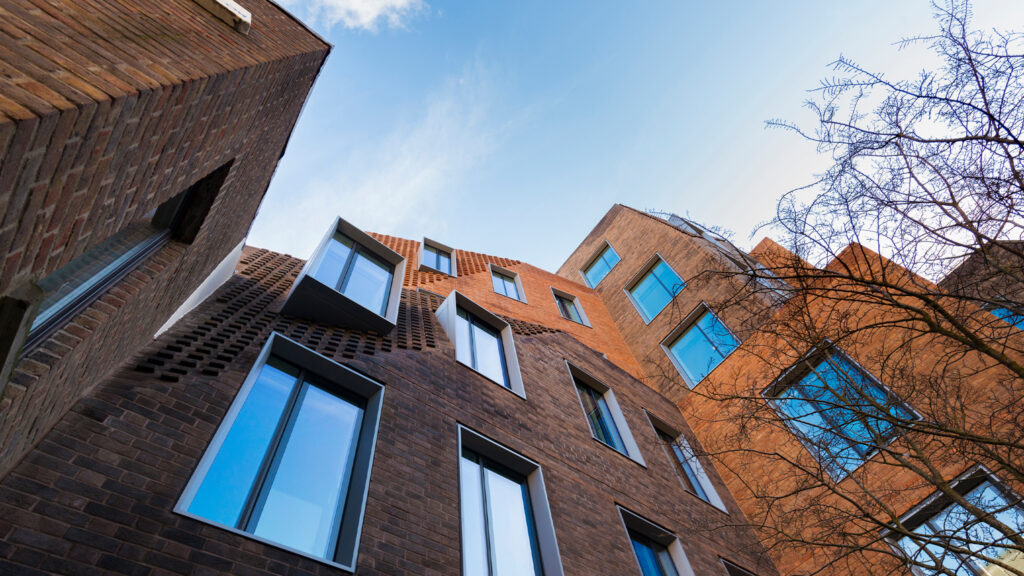Exploring the Impact of Mixed-Use Structures on Community Engagement and the Changing Dynamics of Shared Spaces

When it comes to designing and constructing a building, beyond its exterior style, the consideration of ‘functional utility’ or ‘usefulness’ is crucial. This is because every construction involves an investment, and developers aim to reap returns within a certain timeframe—usually a few years. With the diminishing availability of land, the construction of single-function buildings, catering to a sole utility, is becoming economically less viable. This has led to a rise in the design and construction of ‘Mixed-Use’ buildings.
Mixed-Use Buildings: A Global Trend in Bangkok’s Urban Landscape
Mixed-Use buildings, a concept not new to the Western world for decades, have gained popularity in Thailand in the past four to five years. The increasing value of land, coupled with the COVID-19 pandemic making single-function buildings less economically feasible, has prompted major real estate developers to transform existing projects into Mixed-Use developments. This involves creating hubs or new central spaces in Bangkok, aligning with the global trend seen in cities like New York, London, Hong Kong, or Singapore.
This shift is not just an architectural change; it’s a reflection of the evolving needs and dynamics of urban living. As developers in Thailand embrace Mixed-Use concepts, the cityscape is undergoing a substantial transformation.
Sustainability Questions Surrounding Mixed-Use Buildings in Bangkok:
While the emergence of Mixed-Use buildings in Bangkok has been substantial, several projects are nearing completion, raising questions about their sustainability in the long run. How does the allocation of space in these modern Mixed-Use buildings relate to the lifestyle of the local community?
New Mixed-Use buildings are contemporary and cater to a relatively clear target audience, spanning from mid to high-end demographics, encompassing offices, residential spaces, and retail outlets. However, the birth of something new often means the demise of something old. The loss may not be confined to just the physical structure but could extend to culture, lifestyle, and even ‘history’ passed down through generations.
The Balancing Act: Embracing Change Without Displacement:
While change is inevitable and may be remembered and commemorated for a year or two, the replacement with something new, unrelated to the local community’s way of life, can lead to a widespread sense of displacement.
In reality, it may sound harsh, but the rise of Mixed-Use buildings can create a flow that fosters interaction between new functionalities and the local community’s way of life. This is achieved through thoughtful design and consideration of factors since the beginning.
For instance, creating public spaces beneath the building to encourage community engagement or adopting Singapore’s model of providing public parking spaces to increase the Floor to Area Ratio (FAR) and allow for taller buildings. This approach ensures that the new developments are not isolated structures but integral parts of the community.
The ‘Stick and Carrot’ Approach to Urban Planning:
One interesting perspective shared by urban planners is that addressing the issues of Mixed-Use buildings and their relationship with the local community involves a delicate balance of ‘Stick and Carrot.’ Real estate developers, profit-driven entities, need effective ‘Carrots’ or incentives to invest in and implement change. In parallel, there must be clear ‘Sticks,’ i.e., laws and regulations mandating thoughtful consideration of various factors, environmental impact, and the surrounding context.
However, Thailand currently lacks stringent regulations that can be effectively enforced without loopholes, making it challenging to implement the ‘Stick.’ Simultaneously, there is a shortage of effective ‘Carrots’ or incentives for both developers and the local community to embrace these changes wholeheartedly.
Government’s Role in Driving Sustainable Initiatives:
As the public and private sectors grapple with these challenges, the question arises: Is it time for the government to take a more active role in driving such initiatives? It’s time to find common ground, initiate changes, and work towards a future where Mixed-Use buildings coexist harmoniously with the local way of life.
The government’s involvement becomes crucial in establishing clear guidelines, stringent regulations, and effective incentives that ensure the sustainable development of Mixed-Use projects. This could involve tax incentives for eco-friendly designs, community development initiatives, or zoning regulations that encourage thoughtful planning and engagement with the existing community.
Paving the Way for a Harmonious Future
In conclusion, the rise of Mixed-Use buildings in Bangkok marks a significant shift in urban development. It is a call for a more holistic approach that embraces change while preserving the essence of local communities. Striking a balance between innovation and preservation, coupled with effective urban planning and government involvement, can pave the way for a future where Mixed-Use buildings contribute positively to the cultural tapestry, environmental sustainability, and economic growth of the community.
As Bangkok transforms, it is essential to navigate this change with sensitivity and foresight, ensuring that the city’s evolution reflects the aspirations and values of its people.
#TicyCity #MixedUseBuilding #SustainableUrbanDevelopment #CommunityEngagement #BangkokCityscape #GovernmentInitiatives #FutureOfUrbanLiving